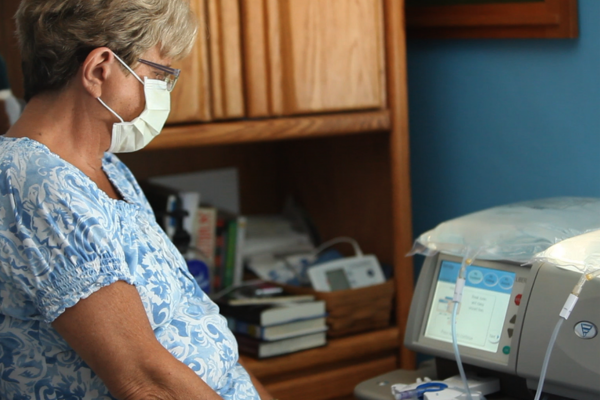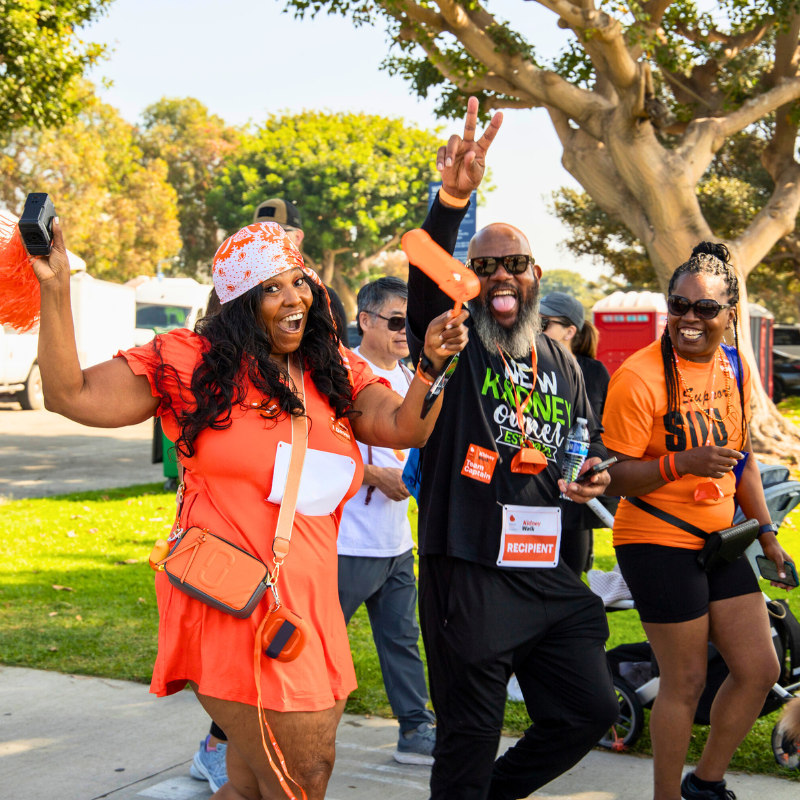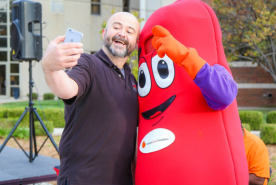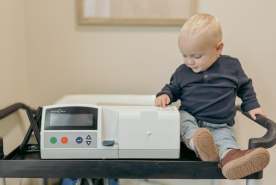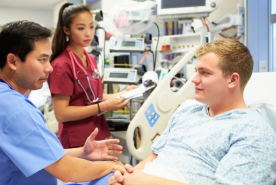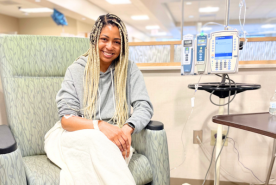February 19, 2025
Kidney failure is no longer a death sentence. Today, those with kidney failure have treatment options like dialysis and kidney transplantation. Unfortunately, many aren't aware of treatment options like peritoneal dialysis.
What is peritoneal dialysis, and who can benefit from it? Britney Dickerson, a dialysis patient, and Jenny Wilson, the Regional Director of a home dialysis program in New York City, answer these questions and more.
What is Peritoneal Dialysis?
Peritoneal dialysis (PD) is a type of home dialysis performed daily.
"PD is a needle-free, bloodless form of dialysis," Jenny said. "One of the primary advantages is that PD works similarly to a healthy kidney."
For this treatment, a catheter is inserted into the belly's lining. A sugar-based fluid, dialysate, flows through the catheter. It removes toxins, waste, and excess fluid as it cycles out.
There are two types of PD:
- Continuous Ambulatory Peritoneal Dialysis (CAPD): Done by hand, without a machine, during the day while people do daily activities like work or school.
- Automated Peritoneal Dialysis (APD): Performed with a machine, usually at night during sleep.
"The frequency of treatments helps the body produce urine which may reduce stress on the heart," said Jenny. "Patients often have fewer dietary restrictions, take less medication, and can maintain their routines with fewer interruptions."
There are not many requirements for peritoneal dialysis.
"One is stable housing. The second is manual dexterity. To screen for this, I ask patients to take a pen cap off and put it back on," Jenny said. "You also don't need a care partner."
However, PD isn't for everyone.
"Treatments are daily and last longer. People also need space to store PD supplies. Some don't like having a long catheter that sticks out of the body," Jenny said. "There is a significant time commitment for PD training."
Weight gain can also be an issue due to the sugar in the dialysis fluid. Since weight and BMI are factors for transplant approval, this could create challenges. A registered dietitian and healthcare team can help develop a plan to maintain a healthy weight.
Subscribe today!
Join the NKF Blog Newsletter
Get inspirational stories and kidney disease resources delivered to your inbox every month. You'll gain practical insights and expert advice to help you better understand and manage your kidney health no matter where you are on your kidney journey.
How to Start Peritoneal Dialysis
Brittany was diagnosed with polycystic kidney disease at 12.
"I managed it for years. In 2019, my kidney function declined significantly. I worked hard to follow a kidney-friendly diet low in animal protein and sodium," Brittany said. "My kidneys failed in August 2022."
Brittany was considering her top two options: in-center hemodialysis and peritoneal dialysis.
"My nephrologist (kidney doctor) sold me on PD. I'm young, independent, and my overall health was good enough for PD,'" Brittany said. "Being so involved in my treatment and care also shows the transplant team that I'm a good candidate who will care for a new kidney."
The next step was to get the catheter placed.
"Outpatient surgery for the catheter was scheduled a week later. It was emotionally difficult to accept that a foreign object, the tube, would stick out of me," said Brittany. "Other than that, it was a smooth process. While it healed, I went to my new dialysis clinic. They flushed me and checked the healing."
After several weeks, the clinic was happy with Brittany's healing. Next up was training.
"Training lasts eight to fifteen days for four to six hours daily. It is comprehensive. It covers everything from infection control and nutrition to caring for the catheter and exit site," Jenny said. "People learn what steps to perform, how to troubleshoot unexpected events, and what to do in emergencies.
Brittany trained for two weeks, seven hours a day. With that and the help of her support system at home, she's become confident in running her treatment.
Have questions about PD? Contact NKF Cares toll-free at 855.653.2273 or email nkfcares@kidney.org to ask questions and get answers from trained professionals.
Peritoneal Dialysis Myths Busted
While PD has many benefits, it's underutilized in the United States.
"The system makes going into hemodialysis the path of least resistance," said Jenny. "I also don't think clinicians give patients enough credit. Patients who want to do it are ideal candidates."
Many myths make patients wary of starting PD. Here are the top three and the truth behind them:
Myth 1: There's a Greater Risk of Infection
Many people think PD has a higher risk of infection than other dialysis types. The truth? The risk of infection with a PD catheter is no greater than with a central line or vascular access used in hemodialysis.
"When infections do happen, they are often linked to a break in infection control steps," Jenny said. "When infections do happen, they're usually more mild. They're managed at the facility level without needing hospitalization."
Following training and hygiene guidelines helps keep the risk low and manageable.
"All possible issues are addressed during training. After training, you are never left stranded without help," Brittany said. "Help is available 24/7 whether you have a question or need help."
Learn how to care for a PD catheter.
Myth 2: PD Limits Physical Activities
Some believe PD patients can't be active, but this isn't true.
"While the catheter is healing, we ask patients not to take a shower or bath. After healing, avoid hot moist places like hot tubes," Jenny said. "PD patients can still swim in the ocean or a well-maintained pool. You can still go on vacations, work, and enjoy life."
PD safe exercises:
- Walking
- Stationary bike
- Chair Yoga
- Water aerobics with proper infection control precautions
- Tai Chi
Learn more about exercise and kidney disease.
Myth 3: PD Has a Strict Schedule and Prescription
People often think PD is rigid, but it's very flexible. Doctors adjust treatment to fit each patient's needs based on kidney function, lab results, and lifestyle.
"I started on a general prescription overnight on the ADP machine. As my doctors learned more about my labs and lifestyle, they switched me to manual," Brittany said. "This worked well for me. I was able to do dialysis whenever and wherever I wanted."
This customization can help people feel more in control of their treatment.
Ask your Representative to help more patients access home dialysis.
Next Steps
If you are not on dialysis yet, talk to your nephrologist about PD as a future treatment. They will help you decide if it is the proper treatment for you and explain what it involves.
If you're already on dialysis, ask your dialysis center for more information about PD.
"Not all clinics offer PD, but every clinic is required to teach patients about their treatment choices," Jenny said. "Talk to your hemodialysis team to get more details."
Brittany shares three pieces of advice for anyone considering PD.
- You're not alone. Your training nurse and care team are there to help you every step of the way, not just during training. It can feel overwhelming, but everyone involved wants you to succeed.
- Get your information from a trusted source, like NKF. There are many myths about PD. It would be a shame to decide not to do it because of wrong information.
- Join NKF Peers. Kidney patients can connect with others who have been through the same things. These mentors share their experiences with dialysis, kidney transplants, and living kidney donation.
Starting PD may seem scary, but NKF and your care team will be there to guide you every step of the way.
*This content is provided for informational use only and is not intended as medical advice or as a substitute for the medical advice of a healthcare professional.
